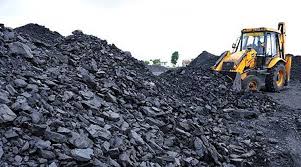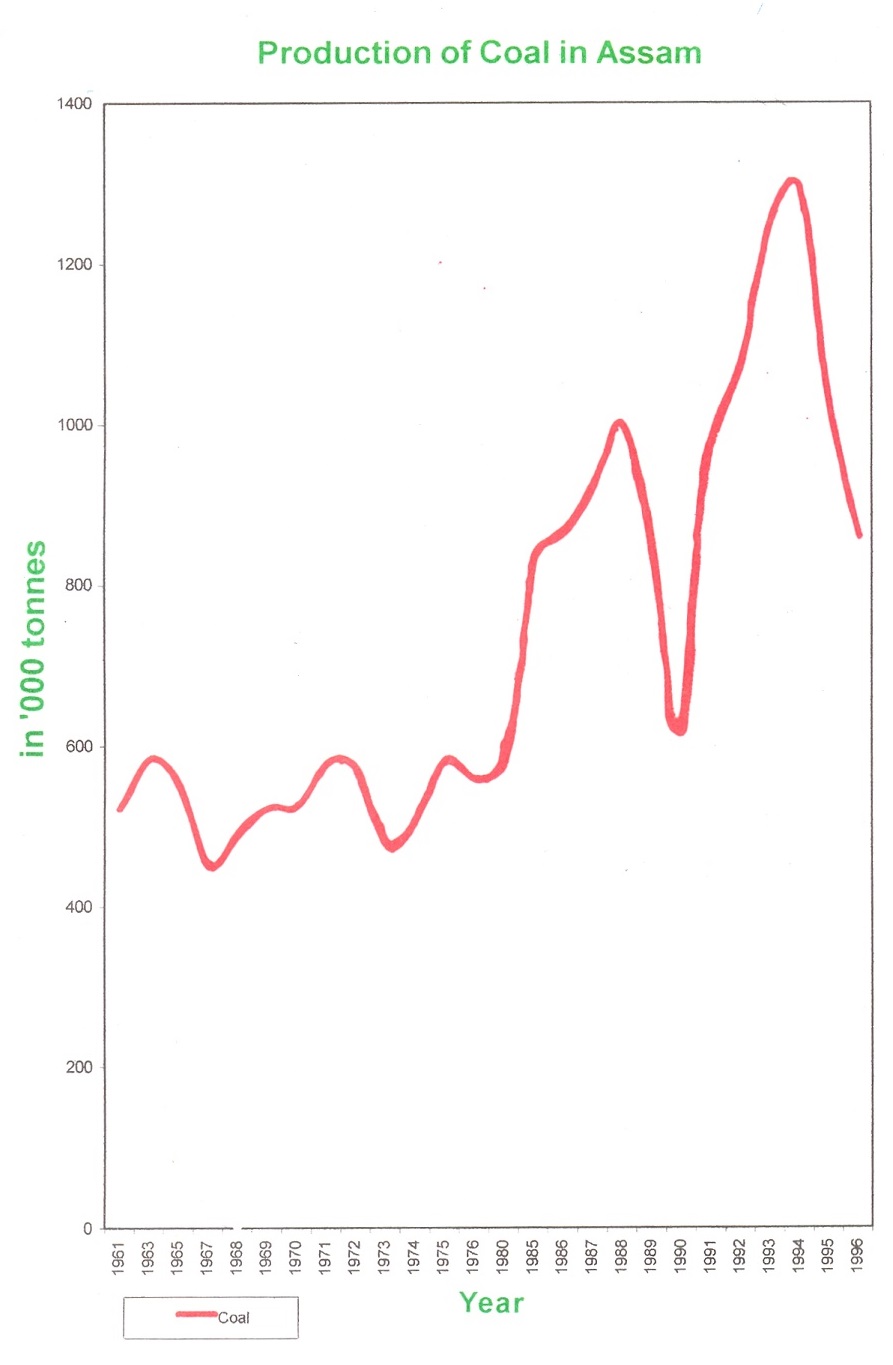
Introduction:
- The existence of coal deposits in Upper Assam had been known from the early days of the British occupation of the State. It is mentioned in the old Gazetteer of Lakhimpur that in 1825,Lieutenant Wilock reported that coal was found near Borhat on the Disang river.
- In 1825,about 5000 maunds of coal were quarried by Mr.Bruce was dispatched to Calcutta. The Coal was pronounced to be equal to English coal and the best ever found in India. But it took time to develop this industry.
- A geological survey of coal fields was undertaken by Mr.Medlicott in 1864-65. In 1876,Mr.Mallet who examined the coal fields of Nagaland,divided the coal measures of Lakhimpur into two fields,Makum and Jaipur. According to him,Makum coal field contained about eighteen million tons of coals,about half of which could be exploited
- easily but no progress worth mentioning in the exploitation of this mineral could be made until the formation of the Assam Railways and Trading Company in 1881.
- The survey of the coal resources of Assam was started by the Central Fuel Research Institute at Dhanbad in 1953,and later in 1957,the Coal Survey Station for the Assam coal fields was established in temporary premises at Jorhat.
- Then it was permanently shifted to Rowriah where the Regional Research Laboratory for Assam has been constructed. The survey and research conducted by the C.F.R.I and its station at Jorhat has revealed that Assam coals are very important geologically.
- The Tertiary coals are found generally to be a rank of lignite but Assam coals have abnormal properties in so far as they exhibit dual characteristics of a high and of a low rank coal,and their abnormality is generally attributed to high organic sulphur contents.
Makum coalfield :
- Makum coal field near Margherita is 30 kms.long,and about 5 kms.wide between the Dirak on the west and the hairpin bend on the Tirap river on the east. The coal seams extend eastward from Namdang,along the two opposite limbs of the east plunging Namdang syncline.
- The sourth limb of the syncline is obscured,at places by the Haflong-Disang thrust and consequently the coal seams extending along this are either highly distorted or totally cut off at intervals.
- At present,working collieries in the Makum area are at Ledo,Namdang Tipong and Borgolai. These collieries are situated in a line among the lower hills about 6.4 kms.south of Margherita.
- The coal field at Ledo (at Tikak,Ledo valley and Upper Ledo)was discovered in 1882 and since then it is producing coal of good quality.
- The work at Namdang and Tirap Grants which formerly belonged to Mr.Haly and which paid a small dead rent in place of royalty,began in 1897 and 1988 respectively. The colliery at Borgolai was established in 1909 and while colliery at Tipong in 1924.
Jaipur coalfield :
- The coal bearing strata extends along the western edge of the Tipam Hills. Outcrops of the seams are seen along a strip of 25 miles (40 kms.)long,about half of which lie in the Sibsagar district. A thickness of more than 13 metres of coal in 6 seams is exposed in the Dilli river.
- The coal bearing rocks dip to the east with high inclination, (300 to 800). On the Sibsagar side,that is,to the west of the Dilli River,the colliery has an area of four square mile (10.24 sq.kms.). Compared to the coal of Makum field,the Dilli coal has as shown by investigation carried out at the Regional Coal Survey Station at Jorhat,low calorific value and high oxygen on unit coal basis.
- The coal so investigated appears to have been oxidised in situ,and it is likely that they may improve in quality at depth. Like all Teritary coals of Assam,the Dilli coals are friable and produce high proportion of fixes.
Najira coalfield :-
- The Nazira coalfield about 25 kms.in length lies about 6.4 kms.south of Naginimara station up the Dikhou river.
- Except for a small outcrop of coal measure within 8 kms.of the Saffrai railway station,the coalfield lies in the Naga Hills. Since the coal is worked from the Sibsagar district,the Nazira coalfield may be conveniently described here.
- The thickest coal measures are exposed in the Saffrai river where there are 5 workable seams totaling about 22 metres in thickness. The reserves of coal estimated in limited areas of the coalfield,appear to be about 40 million tonnes.
- Data available from sources other than the Regional Coal Survey Station indicated that the coals are good quality. They have about 5 per cent moisture,1 to 4 per cent ash and 2 to 3 per cent sulphur.
Jhanji and Disai Coal deposits :-
- The coal bearing on the Jhanji river is quite narrow. While the Disai lies just on the State border,the other area stretches further in the Naga Hills. The seams are few,thin and highly inclined.
- Besides these coalfields,there are also two collieries namely Koilajan colliery and Sibheta located in Karbi Anglong district. The Koilajan colliery is near Hills and has been in operation since 1949. The area of working operation is about 700 acres.
- The output of coal from this colliery is gradually on the decline. High mining cost,transportion difficulty and poor quality of coal render its coal less attractive as compared to coal from Ledo and Margherita coalfields.
- The Silbheta colliery is situated at a distance of 42 kms. From Diphu on the Diphu-Nagaon Road. Its base area is 2.59 sq.kms. The mining operation in this colliery commenced on 6th February,1963. The thickness of coal seam in this colliery is very low. This coal mine is operated through manual labour. In peak period of working,it provides employment to 300 labourers.
- Assam products about 1.3% of the total Indian output of coal. Because of higher labour cost and greater difficulties of transport the coast of coal in Assam is higher in comparison to that of other coal producing centres in India.
- The higher sulphur content (about 3 to 5 per cent in contrast to about 2 per cent in Jharia and Raniganj fields),in the coke produced from Assam coal makes it unsuitable for metallurgical purposes except for smelting sulphuric ores,e.g.,lead copper or zinc. It is also not suitable for boilers. But this coal has the unique advantage of lesser ash content (about 2 to 5 per cent as compared to 15 to 20 per cent in Jharia)and higher calorific value.
- If a process could be evolved to disulphurise it cheaply,then its demand will naturally show a sharp rise as it will then be ideally suitable for metallurgical purpose and will also produce much needed sulphur as a by-product.
The overall production of call in Assam was 524,000 tonnes in 1961. The coal production was increased to 578,000 tonnes in 1971. There was noticeable increase of coal production during the year 1994 when it reached the peak of 1292 thousand tonnes. As per 2014 Coal Ministry data, Assam produced 664 thousand tonnes of coal, ranking 10th in the country. Meghalaya tops in terms of production as well as reserve in the north east.

Issues associated Assam Coal:
- High amount of sulpher presence in the coal.
- Almost all the coals are tertiary coals. Or they are mostly lignite coals. So the calorific value is low.
- Environmental challenges include large scale landscape damage, soil erosion, loss of forest ecosystem and wildlife habitat, air, water and soil pollution.
- Issue of pilveferages lead to loss of coal, hence the economic return.
- Inadequate administrative controls over the coal mines. So the coal mafias are highly prevalent leading loss of natural resource in the wrong hand and the loss to public exchequer.
- The mining techniques are still traditional and higly inefficient. There is need for modern, sophisticated technologies which will lead to less loss and greater renumeration.